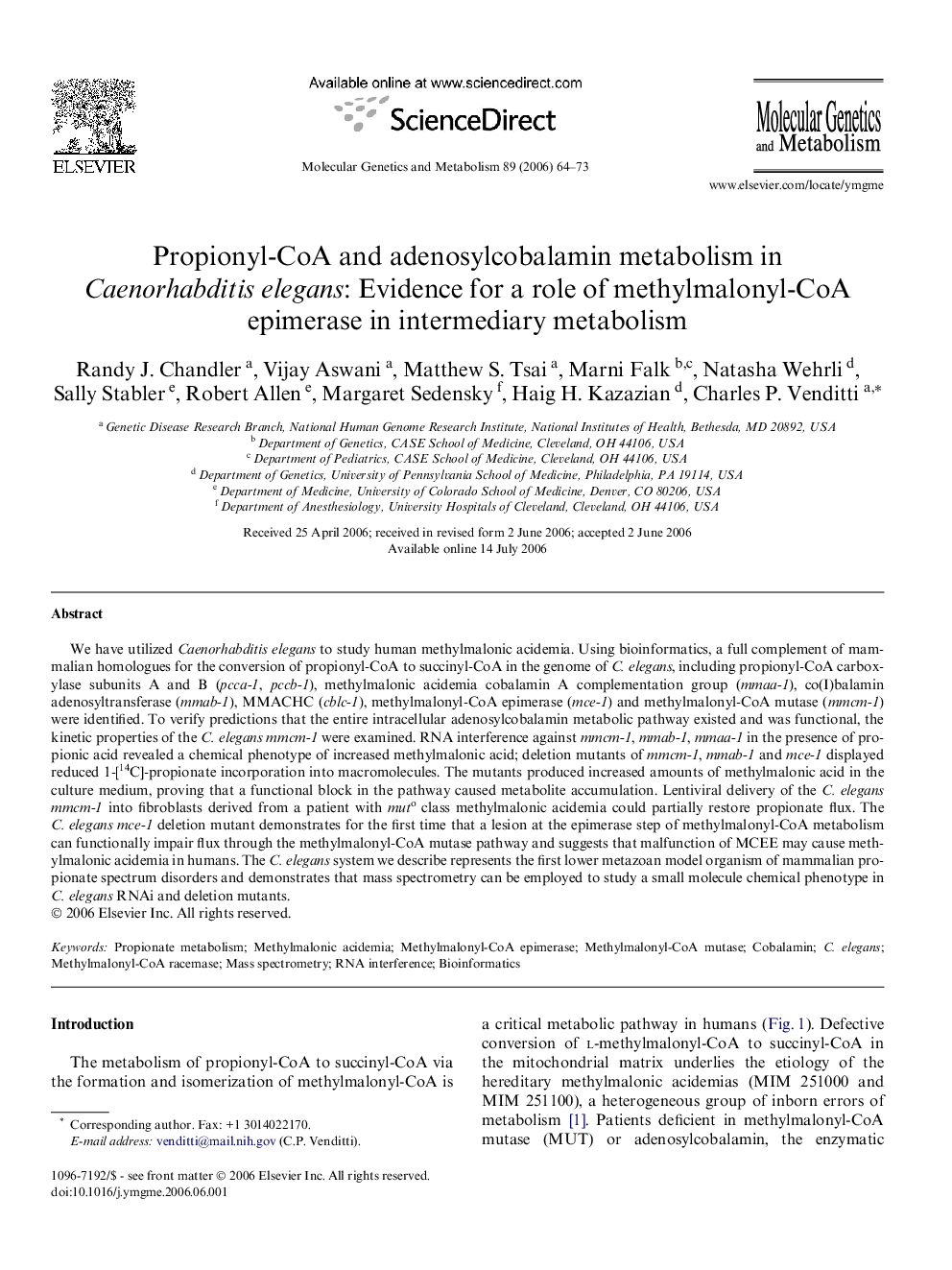| کد مقاله | کد نشریه | سال انتشار | مقاله انگلیسی | نسخه تمام متن |
|---|---|---|---|---|
| 2000291 | 1541571 | 2006 | 10 صفحه PDF | دانلود رایگان |

We have utilized Caenorhabditis elegans to study human methylmalonic acidemia. Using bioinformatics, a full complement of mammalian homologues for the conversion of propionyl-CoA to succinyl-CoA in the genome of C. elegans, including propionyl-CoA carboxylase subunits A and B (pcca-1, pccb-1), methylmalonic acidemia cobalamin A complementation group (mmaa-1), co(I)balamin adenosyltransferase (mmab-1), MMACHC (cblc-1), methylmalonyl-CoA epimerase (mce-1) and methylmalonyl-CoA mutase (mmcm-1) were identified. To verify predictions that the entire intracellular adenosylcobalamin metabolic pathway existed and was functional, the kinetic properties of the C. elegans mmcm-1 were examined. RNA interference against mmcm-1, mmab-1, mmaa-1 in the presence of propionic acid revealed a chemical phenotype of increased methylmalonic acid; deletion mutants of mmcm-1, mmab-1 and mce-1 displayed reduced 1-[14C]-propionate incorporation into macromolecules. The mutants produced increased amounts of methylmalonic acid in the culture medium, proving that a functional block in the pathway caused metabolite accumulation. Lentiviral delivery of the C. elegans mmcm-1 into fibroblasts derived from a patient with muto class methylmalonic acidemia could partially restore propionate flux. The C. elegans mce-1 deletion mutant demonstrates for the first time that a lesion at the epimerase step of methylmalonyl-CoA metabolism can functionally impair flux through the methylmalonyl-CoA mutase pathway and suggests that malfunction of MCEE may cause methylmalonic acidemia in humans. The C. elegans system we describe represents the first lower metazoan model organism of mammalian propionate spectrum disorders and demonstrates that mass spectrometry can be employed to study a small molecule chemical phenotype in C. elegans RNAi and deletion mutants.
Journal: Molecular Genetics and Metabolism - Volume 89, Issues 1–2, September–October 2006, Pages 64–73